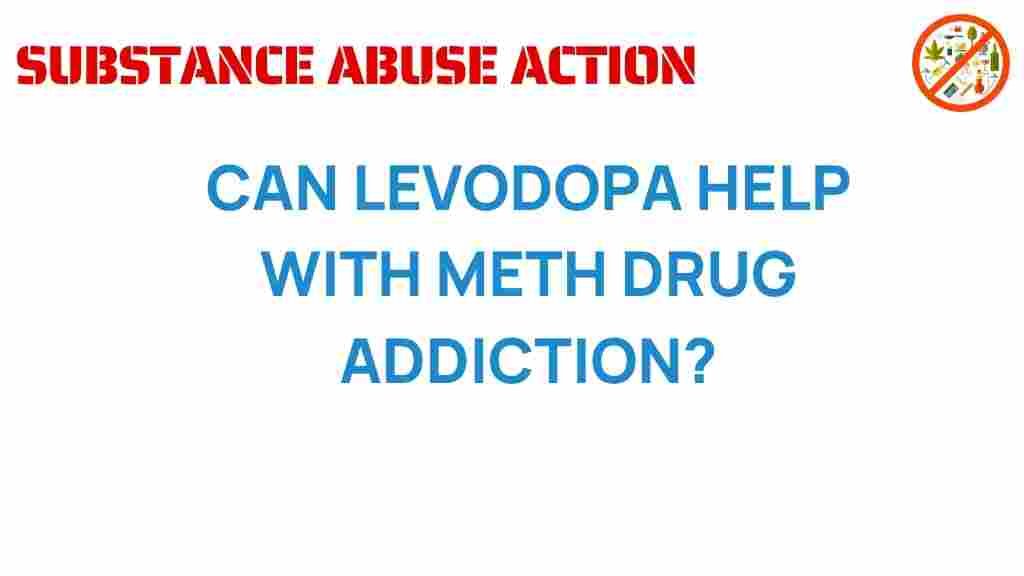The Unexpected Role of Levodopa in Combating Meth Addiction
In recent years, the battle against meth addiction has called for innovative approaches to treatment. Among these approaches, levodopa, a well-known medication primarily used to treat Parkinson’s disease, has emerged as an unexpected ally in the fight against substance abuse. This article explores the science behind levodopa and its potential role in recovery from meth addiction, shedding light on the intricate relationship between dopamine, mental health, and neuroscience.
Understanding Meth Addiction
Methamphetamine, commonly known as meth, is a powerful central nervous system stimulant that significantly impacts the brain’s reward system. Its addictive properties are primarily due to its ability to increase the levels of dopamine, a neurotransmitter associated with pleasure, motivation, and reward. The chronic use of meth leads to devastating consequences for mental health and overall well-being.
- Physical health issues: Chronic meth use can result in severe dental problems, skin sores, and weight loss.
- Mental health disorders: Users may experience anxiety, depression, and symptoms of psychosis.
- Social consequences: Relationships, employment, and legal issues often deteriorate due to addiction.
The Neuroscience of Addiction
Understanding the neuroscience behind meth addiction is crucial for developing effective treatment strategies. When meth is consumed, it releases a surge of dopamine, leading to intense euphoria. However, repeated use alters the brain’s circuitry, diminishing the natural production of dopamine and making it difficult for users to feel pleasure from everyday activities. This is often referred to as the “crash” experienced after meth use, prompting individuals to continue using the drug to avoid withdrawal symptoms.
Levodopa: An Overview
Levodopa (L-DOPA) is a precursor to dopamine that has been used for decades to treat Parkinson’s disease. It works by crossing the blood-brain barrier and converting into dopamine, thereby replenishing the depleted levels in the brains of Parkinson’s patients. Recent studies suggest that levodopa could also play a role in treating meth addiction by restoring dopamine levels disrupted by chronic meth use.
The Mechanism of Levodopa in Treating Meth Addiction
The potential benefits of levodopa in the context of meth addiction can be understood through the following mechanisms:
- Dopamine Regulation: By increasing dopamine levels, levodopa may help alleviate withdrawal symptoms and cravings associated with meth use.
- Neuroprotection: Levodopa may protect against some neurotoxic effects of meth, potentially preserving cognitive function.
- Behavioral Reinforcement: Restoring dopamine levels could enhance engagement in positive behaviors, facilitating recovery.
Research Findings on Levodopa and Meth Addiction
Several studies have explored the efficacy of levodopa in treating meth addiction. For instance, a study published in the journal “Neuroscience” found that patients who received levodopa showed significant reductions in cravings and improved mood compared to those who did not. This research indicates that levodopa can positively impact both mental health and substance abuse recovery.
Step-by-Step Process for Incorporating Levodopa into Treatment
Integrating levodopa into a treatment plan for meth addiction involves several steps:
- Assessment: Conduct a thorough evaluation of the patient’s history, current health status, and severity of addiction.
- Consultation: Discuss the potential benefits and risks of using levodopa with a healthcare provider specializing in addiction medicine.
- Dosing: If approved, determine the appropriate dosage of levodopa based on individual needs and response to treatment.
- Monitoring: Regularly monitor the patient’s progress, adjusting the treatment plan as necessary to ensure optimal outcomes.
- Supportive Therapy: Combine levodopa treatment with behavioral therapies and support groups to enhance recovery efforts.
Potential Risks and Considerations
While levodopa shows promise in treating meth addiction, there are potential risks and considerations:
- Side Effects: Patients may experience side effects such as nausea, dizziness, or dyskinesia.
- Dependency: There is a risk of developing a dependency on levodopa itself, necessitating careful management.
- Individual Variation: Each patient’s response to levodopa may vary, requiring personalized treatment plans.
Troubleshooting Tips for Treatment Challenges
When incorporating levodopa into treatment for meth addiction, challenges may arise. Here are some troubleshooting tips:
- Monitor Side Effects: If side effects occur, consult the prescribing physician to adjust the dosage or explore alternative treatments.
- Engage in Therapy: Encourage patients to participate in therapy sessions to address underlying psychological issues related to addiction.
- Build a Support System: Create a strong support network involving family, friends, and support groups to facilitate recovery.
Internal and External Resources for Further Reading
For those interested in learning more about the treatment of meth addiction, consider exploring the following resources:
- National Institute on Drug Abuse – A comprehensive resource on drug addiction and treatment options.
- Substance Abuse and Mental Health Services Administration – Offers information on treatment programs and services.
Conclusion
The unexpected role of levodopa in combating meth addiction highlights the importance of innovation in treatment approaches. As neuroscience continues to unveil the complexities of addiction, incorporating levodopa into recovery plans presents a promising avenue for restoring dopamine levels and improving mental health. While challenges remain, the potential of levodopa in the context of substance abuse treatment is an exciting development that warrants further exploration.
As the field of pharmacology advances, understanding the intersection of levodopa, meth addiction, and recovery can pave the way for more effective treatments and brighter futures for those struggling with addiction.
This article is in the category Treatment and created by SubstanceAbuseAction Team
